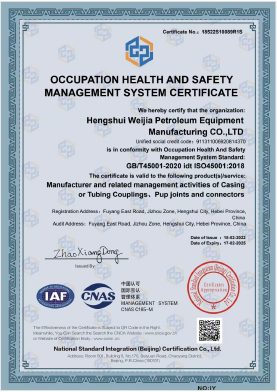- Afrikaans
- Albanian
- Amharic
- Arabic
- Armenian
- Azerbaijani
- Basque
- Belarusian
- Bengali
- Bosnian
- Bulgarian
- Catalan
- Cebuano
- Corsican
- Croatian
- Czech
- Danish
- Dutch
- English
- Esperanto
- Estonian
- Finnish
- French
- Frisian
- Galician
- Georgian
- German
- Greek
- Gujarati
- Haitian Creole
- hausa
- hawaiian
- Hebrew
- Hindi
- Miao
- Hungarian
- Icelandic
- igbo
- Indonesian
- irish
- Italian
- Japanese
- Javanese
- Kannada
- kazakh
- Khmer
- Rwandese
- Korean
- Kurdish
- Kyrgyz
- Lao
- Latin
- Latvian
- Lithuanian
- Luxembourgish
- Macedonian
- Malgashi
- Malay
- Malayalam
- Maltese
- Maori
- Marathi
- Mongolian
- Myanmar
- Nepali
- Norwegian
- Norwegian
- Occitan
- Pashto
- Persian
- Polish
- Portuguese
- Punjabi
- Romanian
- Russian
- Samoan
- Scottish Gaelic
- Serbian
- Sesotho
- Shona
- Sindhi
- Sinhala
- Slovak
- Slovenian
- Somali
- Spanish
- Sundanese
- Swahili
- Swedish
- Tagalog
- Tajik
- Tamil
- Tatar
- Telugu
- Thai
- Turkish
- Turkmen
- Ukrainian
- Urdu
- Uighur
- Uzbek
- Vietnamese
- Welsh
- Bantu
- Yiddish
- Yoruba
- Zulu
Casing Coupling Measurement Specifications and Guidelines for Optimal Performance
An Overview of Casing Coupling Dimensions in Oil and Gas Industry
Casing is a crucial component in the drilling and completion of oil and gas wells. It refers to the steel pipes that are installed in the drilled wellbore to provide structural integrity and isolate the well from surrounding rock and fluid layers. Among the critical elements involved in casing operations are the casing couplings. These components facilitate the connection between individual casing pipes and play an essential role in ensuring the overall strength and integrity of the well structure. Understanding casing coupling dimensions is vital for engineers and technicians operating in the oil and gas industry.
Importance of Casing Couplings
Casing couplings are short lengths of pipe, generally made from direct welds to ensure minimal risk of failure. They allow for the connection of casing strings of different lengths, accommodating various well depths and geological conditions. The primary purpose of these couplings is to maintain the pressure and integrity of the entire casing system while facilitating the casing installation process. Whether for cementing operations or future interventions, the adequacy of casing couplings directly influences the well's performance and longevity.
Key Dimensions
Casing couplings come in various dimensions based on the type of casing, which is typically categorized by outside diameter (OD), wall thickness, and length. However, the most critical dimensions of casing couplings include
1. Outer Diameter (OD) The OD of a coupling must match the OD of the casing it connects to. Standard casing sizes range from 4.5 inches to over 20 inches in diameter. Ensuring that the coupling OD correlates correctly with the casing pipe prevents leakage and maintains pressure integrity in the well.
2. Inner Diameter (ID) The ID determines the internal flow characteristics of the casing system. A properly maintained ID ensures efficient fluid movement during production and completion operations. It must be adequate to accommodate the specific tools and equipment used in the well.
casing coupling dimensions

3. Thread Type and Length Casing couplings are often threaded at both ends to facilitate ease of connection between casing pipes. The type of thread (e.g., API, buttress, or premium threads) dictates the strength and compatibility of the connection. The length of the threads must also be standardized to prevent excessive wear and ensure sufficient grip when making connections.
4. Wall Thickness The wall thickness of a coupling is crucial for providing strength, especially under high-pressure conditions. Thicker walls are required for deep wells or environments with high pressures and temperatures. The thickness also affects the coupling's weight, which can influence transportation and handling logistics.
5. Length of Couplings While the length of the coupling is standardized, it can vary slightly based on the manufacturer or specific project requirements. Maintaining consistent length across couplings is important to facilitate smooth installation and minimize stresses during operations.
Material Specifications
Casing couplings are typically made from high-strength steel that meets specific industry standards, such as those set by the American Petroleum Institute (API). These materials must demonstrate exceptional durability and resistance to corrosion, especially in hostile environments where sulfur compounds or other corrosive elements might be present.
Conclusion
Understanding casing coupling dimensions is paramount for ensuring the safety, efficiency, and reliability of oil and gas wells. Proper specifications, including outer and inner diameters, wall thickness, thread types, and lengths, all play a significant role in the overall performance of the casing system. As technology continues to evolve, coupling materials and design will also advance, leading to improved efficiency and safety in drilling operations. Ultimately, engineers must continue to adhere to industry standards while considering new designs and materials to adapt to the challenging conditions often faced in the oil and gas industry.
-
Tubing Pup Joints: Essential Components for Oil and Gas OperationsNewsJul.10,2025
-
Pup Joints: Essential Components for Reliable Drilling OperationsNewsJul.10,2025
-
Pipe Couplings: Connecting Your World EfficientlyNewsJul.10,2025
-
Mastering Oilfield Operations with Quality Tubing and CasingNewsJul.10,2025
-
High-Quality Casing Couplings for Every NeedNewsJul.10,2025
-
Boost Your Drilling Efficiency with Premium Crossover Tools & Seating NipplesNewsJul.10,2025







